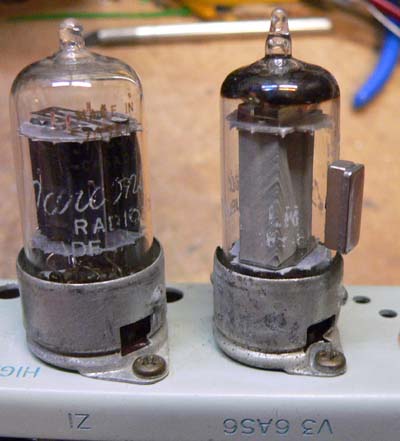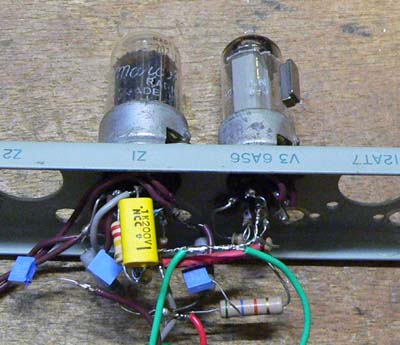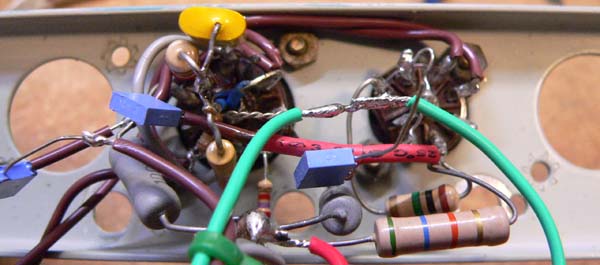|
Noise circuits This circuit originates from the computer industry where it was used as a random signal generator to simulate random actions such as the effect of gusts of wind on the controls of airplanes. Signals arise from fluctuations in the dense layer of positive ions near the cathode of the 2D21.

Turning the pot clockwise adjusts the output level of the noise circuit for about half of the rotation. Beyond that, a filtering effect kicks in. Use 10n (0.01uF) capacitors with voltage ratings of 250 volts or above. The 100n (0.1uF) can be rated for 50V or above. The resistors need to be rated for the appropriate voltages. As such, use 1W resistors for the anode resistors. The 56k resistor is dissipating over 1/2 a watt, so it may be beneficial to use a 2 watt resistor in this position. The remainder of the resistors only need to be 1/4 watt or 1/2 watt. Three 330k resistors are used in the output voltage divider to reduce the voltage across each to reduce the chance of failure. The cautious may wish to put back to back 20 volt 400mW zeners in parallel with the 100k resistor at the bottom of the divider to protect whatever they are connecting to. The output from the divider is around 10 volts peak to peak with no load, dropping to around 5 volts peak to peak into 100k. The position and strength of the magnet are important. Experiment with magnets that are to hand for the best effect and level. It is probably best for the magnet if it is not in direct contact with the tube. The circuit has been tested on voltages between 150V and 200V, with the output level dropping noticeably on the lower voltages.



From Electronics, 34:33, p60-63, Generating Random Forcing Fluctuations for Control System Simulation, N. D. Diamantides and C.E. McCray. A note to readers: this circuitry is intended for the more advanced builder. Because high voltages are used, a shock hazard exists. We do NOT recommend that the novice DIY musician try to construct this synthesizer. Some experience with tube electronics is highly recommended.
Audio Synthesis via Vacuum Tubes Home
|